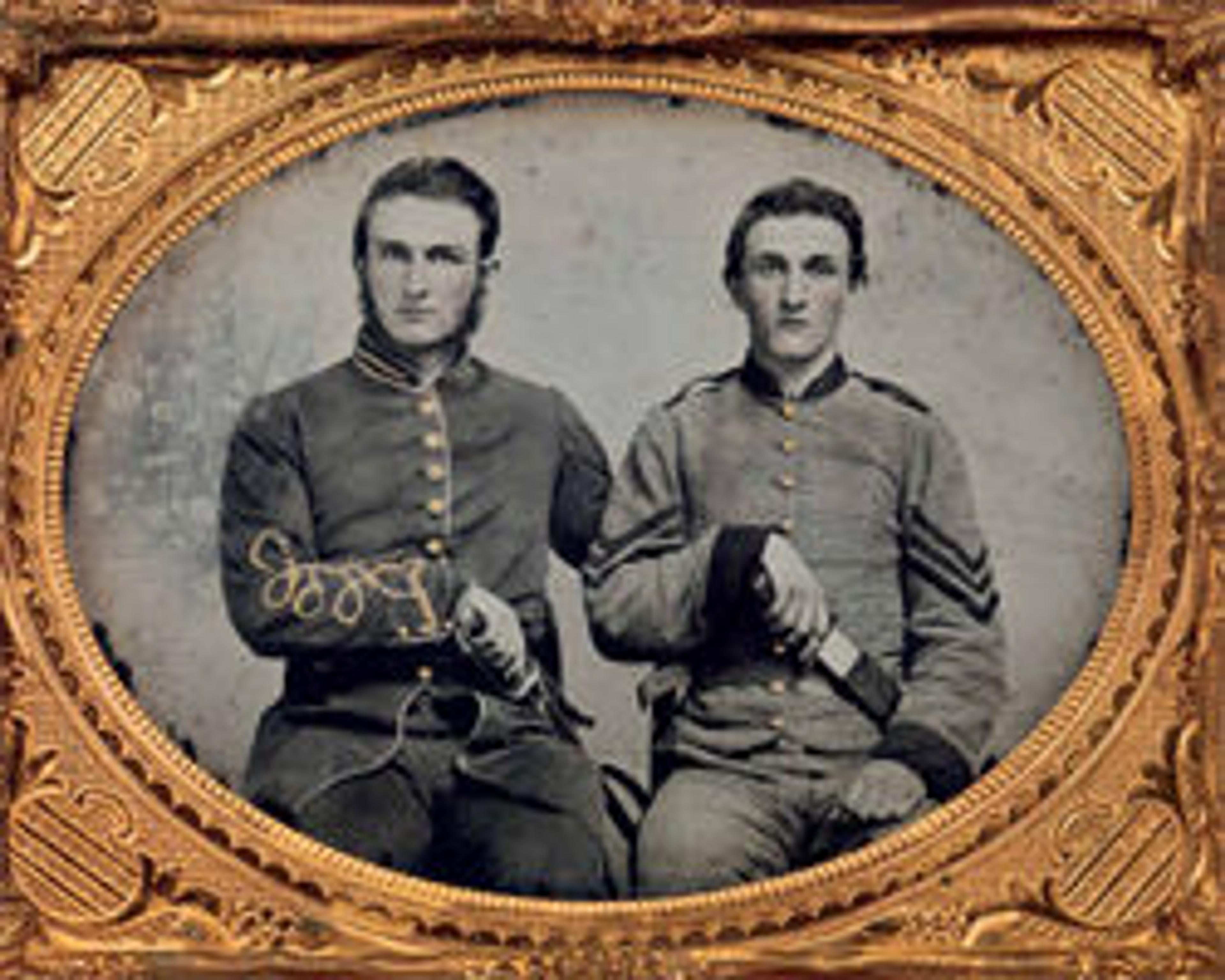Ruins of Gallego Flour Mills, Richmond
In 1861, at the outset of the Civil War, the Confederate government moved its capital from Montgomery, Alabama, to Richmond, Virginia, to be closer to the front and to protect Richmond’s ironworks and flour mills. On April 2, 1865, as the Union army advanced on Richmond, General Robert E. Lee gave the orders to evacuate the city. A massive fire broke out the following day, the result of a Confederate attempt to destroy anything that could be of use to the invading Union army. In addition to consuming twenty square blocks, including nearly every building in Richmond’s commercial district, it destroyed the massive Gallego Flour Mills, situated on the James River and seen here. Alexander Gardner, Mathew B. Brady’s former gallery manager, then his rival, made numerous photographs of the "Burnt District" as well as this dramatic panorama from two glass negatives. The charred remains have become over time an iconic image of the fall of the Confederacy and the utter devastation of war.
Artwork Details
- Title:Ruins of Gallego Flour Mills, Richmond
- Artist:Alexander Gardner (American, Glasgow, Scotland 1821–1882 Washington, D.C.)
- Former Attribution:Formerly attributed to Mathew B. Brady (American, born Ireland, 1823?–1896 New York)
- Date:1865
- Medium:Albumen silver prints from glass negatives
- Dimensions:16.3 x 36.9 cm (6 7/16 x 14 1/2 in.)
- Classification:Photographs
- Credit Line:Harris Brisbane Dick Fund, 1933
- Object Number:33.65.11, .226
- Curatorial Department: Photographs
More Artwork
Research Resources
The Met provides unparalleled resources for research and welcomes an international community of students and scholars. The Met's Open Access API is where creators and researchers can connect to the The Met collection. Open Access data and public domain images are available for unrestricted commercial and noncommercial use without permission or fee.
To request images under copyright and other restrictions, please use this Image Request form.
Feedback
We continue to research and examine historical and cultural context for objects in The Met collection. If you have comments or questions about this object record, please contact us using the form below. The Museum looks forward to receiving your comments.
